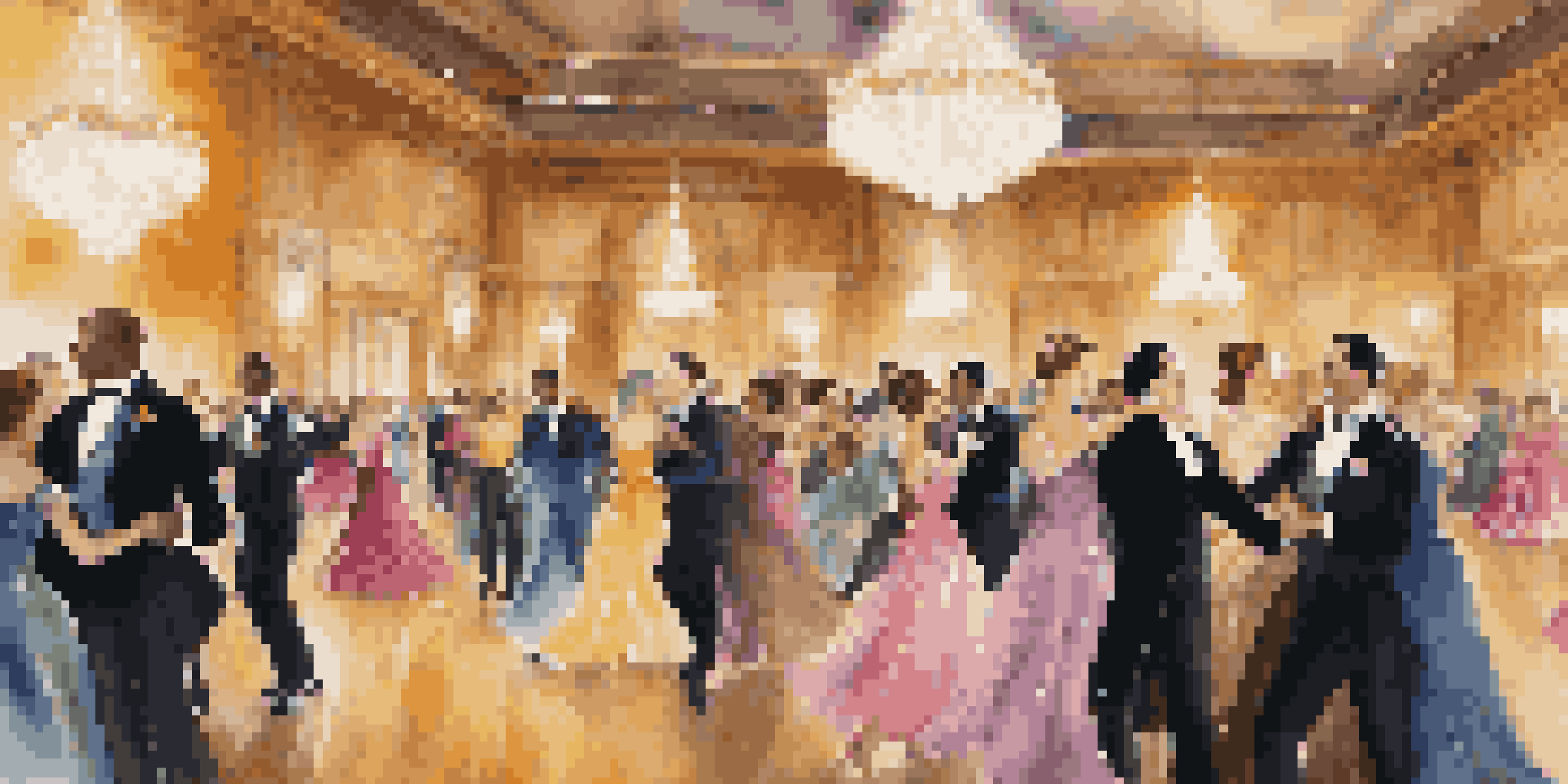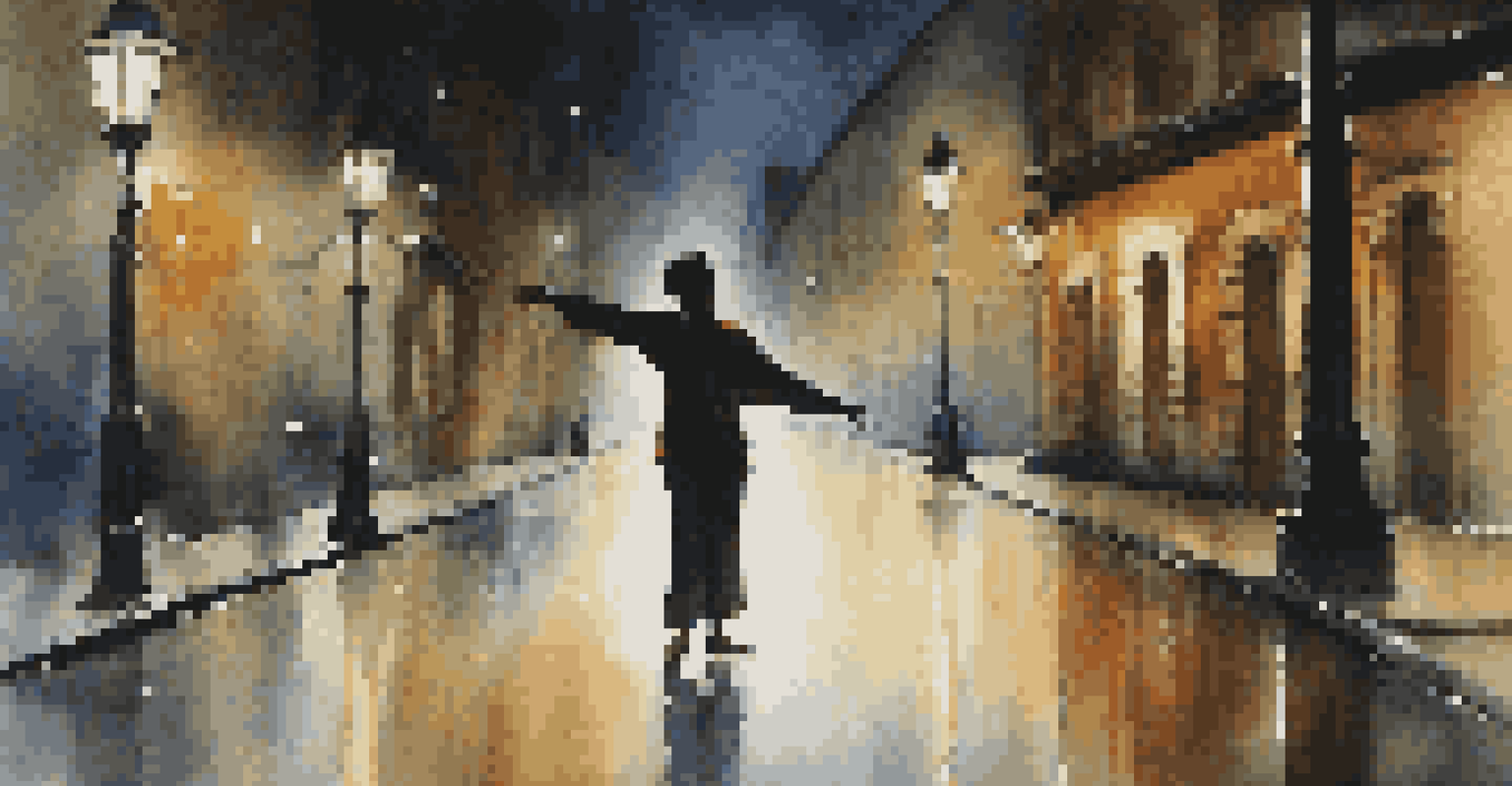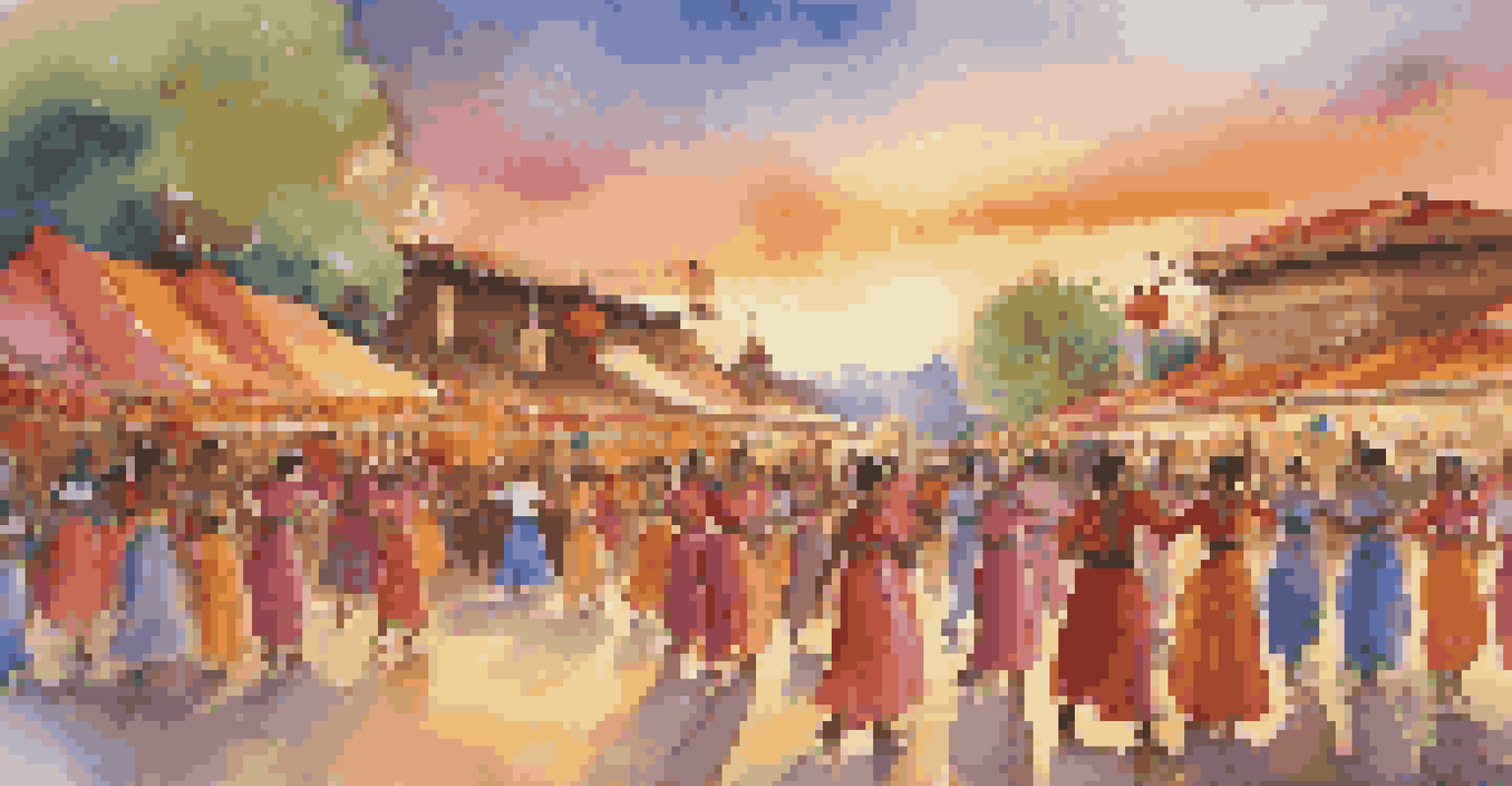The Role of Dance in Setting the Tone of a Film Scene

The Emotional Language of Dance in Film
Dance is often described as a universal language, transcending words to convey deep emotions. In film, the physical expressions of dance can articulate feelings that might otherwise remain unspoken. For instance, a joyous dance scene can instantly uplift the audience, while a more somber routine can evoke sadness or nostalgia.
Dance is the hidden language of the soul.
Consider the iconic dance sequences in movies like 'La La Land' or 'Dirty Dancing.' These moments not only showcase exceptional choreography but also serve to deepen the viewer's emotional connection to the characters. The rhythm and movement in dance allow filmmakers to explore complex emotions in a visually captivating way.
By harnessing the power of dance, filmmakers can create a visceral experience that resonates with viewers on multiple levels. Ultimately, dance helps to set the tone, guiding the audience's feelings throughout the narrative.
How Dance Enhances Character Development
Dance can act as a powerful tool for character development, revealing personalities and relationships in a way that dialogue sometimes cannot. A character's style of movement can hint at their background, emotions, or even their aspirations. For example, a character who dances with abandon may be seen as free-spirited, while a more restrained dancer might suggest inner turmoil.

In films like 'Black Swan', dance becomes integral to the protagonist's journey, showcasing her struggles with identity and ambition. As the character evolves, so too does her dance, mirroring her mental state and growth. This connection between dance and character development creates a more immersive experience for the audience.
Dance as Emotional Expression
Dance serves as a universal language in film, conveying deep emotions and enhancing audience connection.
Thus, filmmakers often use dance to not just entertain, but to add layers to their characters, allowing viewers to engage with their journeys on a deeper emotional level.
Setting the Scene: Dance and Cinematic Atmosphere
The setting of a dance scene plays a crucial role in establishing the overall atmosphere of a film. A lively ballroom, for instance, can create an air of celebration and joy, while a dimly lit street can evoke feelings of loneliness or danger. The choreography, combined with the environment, enhances the emotional tone being set by the filmmakers.
The dance is a poem of which each movement is a word.
In 'Footloose', the contrast between the uptight town and the energetic dance sequences serves to highlight themes of freedom and rebellion. The vibrant choreography stands in stark opposition to the restrictive setting, creating a compelling narrative tension. This interplay between dance and location helps to immerse the audience in the story.
Ultimately, the combination of dance and setting contributes significantly to the film's mood, making each scene more impactful and memorable.
Using Dance to Convey Themes and Messages
Dance often goes beyond mere entertainment; it can be a powerful medium for conveying themes and messages within a film. Through movement, filmmakers can explore social issues, personal struggles, or cultural narratives. A well-choreographed dance can encapsulate conflicts, resolutions, or even the journey of a character.
Take 'Billy Elliot,' for example, where dance represents both personal freedom and the struggle against societal norms. The protagonist's passion for ballet serves as a vehicle for exploring themes of identity and acceptance. Such scenes resonate deeply, making the audience reflect on broader societal issues.
Character Development Through Dance
Dance reveals characters' personalities and emotional journeys, offering a deeper understanding of their struggles.
In this way, dance becomes not just a performance, but a narrative device that enriches the storytelling and engages viewers on a more profound level.
The Role of Music in Dance-Driven Film Scenes
Music and dance are inseparable in film, often working hand-in-hand to create an emotional landscape for the audience. The tempo, rhythm, and style of the music can dictate the choreography and influence how viewers perceive a scene. A lively soundtrack can infuse energy into a dance sequence, while a haunting melody can evoke a sense of melancholy.
For instance, in 'The Greatest Showman', the vibrant musical numbers not only showcase incredible dance but also elevate the emotional stakes of the narrative. The synergy between music and dance helps to establish a dynamic atmosphere, drawing viewers into the story.
This harmonious relationship between dance and music ultimately enhances the film's overall impact, allowing audiences to connect with the emotions being portrayed.
Cultural Significance of Dance in Film
Dance can serve as a cultural touchstone in films, reflecting traditions, values, and societal norms. By incorporating specific dance styles, filmmakers can pay homage to cultural heritage while also broadening the audience's understanding of different communities. This inclusion fosters a sense of connection and appreciation among viewers.
Movies like 'Coco' and 'Mamma Mia!' showcase traditional dances that not only entertain but also educate audiences about cultural practices and celebrations. These dance scenes encapsulate the essence of the cultures they represent, enriching the narrative and providing an authentic experience.
Cultural Significance of Dance
Incorporating specific dance styles in films highlights cultural heritage and fosters appreciation among diverse audiences.
In this way, dance becomes a vital storytelling tool, bridging gaps between cultures and allowing for a shared experience that resonates with diverse audiences.
The Lasting Impact of Dance in Cinematic History
Throughout cinematic history, dance has played a pivotal role in shaping iconic film moments that resonate with audiences. From the classic musicals of the 1950s to contemporary films, dance has evolved while maintaining its ability to convey emotion and storytelling. The influence of these dance sequences can be seen in the way they inspire future generations of filmmakers and choreographers.
Consider the enduring legacy of movies like 'West Side Story' and 'Fame', which have set the standard for integrating dance and narrative. These films not only entertained but also left a lasting imprint on popular culture, inspiring countless remakes, parodies, and homages.

As we continue to explore the role of dance in film, it’s clear that its impact is profound and far-reaching, ensuring that dance will remain a cornerstone of cinematic storytelling for years to come.